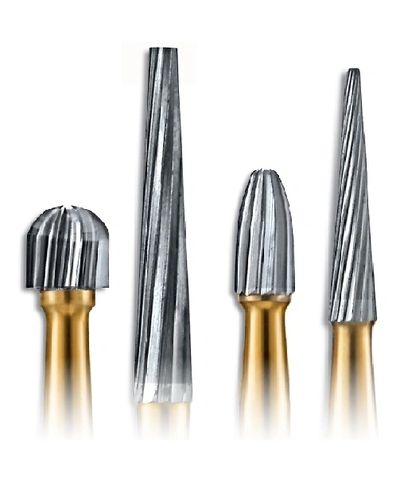The Diamonds Bur is a specialty dental tool that is widely used in a range of dental operations. These tools have a variety of forms, head angles, and blade geometries, depending on whether they are using carbide and diamond burs. Although burs made of carbide and diamond are both highly regarded for their remarkable cutting qualities and resilience, it is essential to understand that they are not interchangeable. It is necessary to choose the proper bur depending on the particular needs of the dental procedure at hand because each type has its advantages and is made for specific uses in dentistry.

How a Dental Bur Works
The head, neck, and shank constitute the three main components of a dental bur, depending on whether it is made of diamond or Carbide burs dental. The blades or grit forming the head cut or grind the material in question, which can range from gold to diamonds, each serving a distinct function.
Diamond Burs – Dental Tool
Diamond burs, featuring various grit sizes and a stainless steel body bonded with diamond powder, enable diverse procedures based on head size and grit. Carbide burs dental and effectively grind bone and hard tissues, such as enamel. Their composition, one of the most challenging materials on Earth, makes them ideal for cutting through complex substances like zirconia and lithium disilicate, surpassing the capabilities of other burs.
Dentists frequently use dental diamond burs to shape and place crowns or veneers, grinding down porcelain or slicing through zirconia. Moreover, they use these burs to smooth tooth structures, ensuring the correct fit of veneers or crowns. One disadvantage of diamond bursts is that they can quickly overheat and dull themselves when shaping materials like metals. This makes them unsuitable for the job.
Both Single- and Multi-Use
Additionally, there are two distinct varieties of diamond burs: single-use and multi-use. With the single-use diamond bur, the user can always have a sharp, sterile bur ready for every new patient. However, multi-use burs are more robust and provide a more cost-effective option because the user can sterilize them. Another advantage is that, unlike single-use burs, which may require more than one to complete a task, these burs are long-lasting, allowing you to complete an entire procedure with just one.
Conclusion
In general, the functions of carbide and diamond burs differ. Teeth are ground down by diamond burs, leaving a rough surface that has to be polished. Conversely, carbide burs precisely cut away small portions of the tooth using tiny blades. Every technique has particular benefits and drawbacks that contribute to their complementary roles as indispensable instruments in a dentist’s toolbox. The decision between carbide and diamond burs depends on the specific needs of a dental procedure, demonstrating the applicability and importance of both methods in contemporary dentistry.
Leave a comment